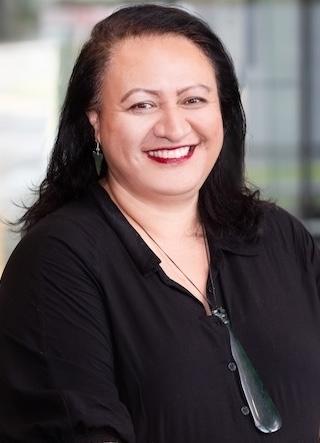
A fertility crisis is occurring over the world with over half of all countries having below replacement fertility. In 2024, the Total Fertility Rate for Aotearoa was just 1.53 births per woman, well below the replacement level of 2.1. Māori fertility, however, is still around replacement and demographer Moana Rarere’s PhD research sought to understand the reasons for this. In particular, she was interested in whether cultural factors influenced Māori fertility patterns.
While Māori fertility has declined dramatically since the 1960s, it is still relatively high by comparison with Pākehā fertility levels. A youthful Māori population means there are still large cohorts moving into the childbearing ages. Māori women also have children significantly earlier than Pākehā, with age-specific fertility rates peaking in the late 20s. Many Pākehā women, by contrast, delay having their first child well into their 30s and thus end up having fewer children.
“When you are in your 30s your chances of giving birth are lower than when you are in your 20’s. You have got wāhine who have a smaller window in time to have their families when they leave it too late,” says Moana.
She says that understanding cultural attitudes is important if governments want to address very low fertility rates. “I noticed that when analysts talked about fertility, they have an economic focus, and I noticed there was a lack of Māori voice in trying to understand why Māori fertility is different from that of our Pākehā counterparts. I wondered if there is some sort of cultural difference which could explain the difference other than purely economic reasons,” she says.
“My research reaffirmed what we have always known generally. Fertility is not just about the number of children, or family size. It is about the continuance of whakapapa and about the survival of those lines. Whakapapa is central to our culture and ensuring it continues and endures is why we have the fertility rates we have,” she says.
“One interviewee emphasised that having children was natural and normal and that it was encouraged by her whānau. Participants also said that while whānau were supportive, they were sometimes the biggest hōhā because of the pressure they exerted for wāhine to have babies. However, the wāhine also knew they would have support from whānau to help raise the child regardless of their age or education at the time of having their babies,” she says.
Moana says having children young is often framed by others as a negative thing to do, especially if you are young and Māori. “For many Māori, it is seen as natural and you just do your best to support them because they are your uri.”
Moana says her research changes the narrative of how young wāhine Māori are viewed. “The dominant narrative out there is that it will ruin your life, and you are a burden to society to be supported to be a mother, but many Māori see having children as a good thing. That’s how our people survive. Our population has recovered remarkably since the early 1900s because our cultural ways have enabled wāhine Māori to have babies and not be assimilated by Pākehā values. Our long-term survival depends on our being able to maintain replacement fertility."
She says her research is important because policy makers need to understand the story behind the statistics. “In order for your population to survive and thrive you need to have the ability to reproduce, if you leave it too late or make it difficult for women to have children, your people will not survive,” says Moana.
Women are under pressure to be educated, to have careers, and then they have the pressure to have children before it’s too late. This society needs to work with nature and support women to have babies younger and perhaps get their education later, she says.
“Societies need to look at how they can support women of all cultures to have children when they are young. They might do this by continuing to invest in supporting whānau, enabling women to stay home and be mothers if they choose, as well as enabling women to acquire their education or support for all mothers in the workforce.”
Moana’s research means she is frequently approached to provide insights on the impacts of falling fertility for Aotearoa. She believes governments need to be more creative in supporting all women to be mothers if they chose, but the issue is complex. “Many governments in developed countries have implemented a range of policies to help boost fertility levels but with little success. The cost of living has been a major deterrent for young people to start a family. Also, we’re seeing increases in the number of women remaining childless for various reasons including infertility issues or never finding the right partner to settle down with. It’s not an easy problem to solve but having the right policy settings and support structures will help to ease some of the pressures, and assist wāhine and whānau with their fertility intentions.”